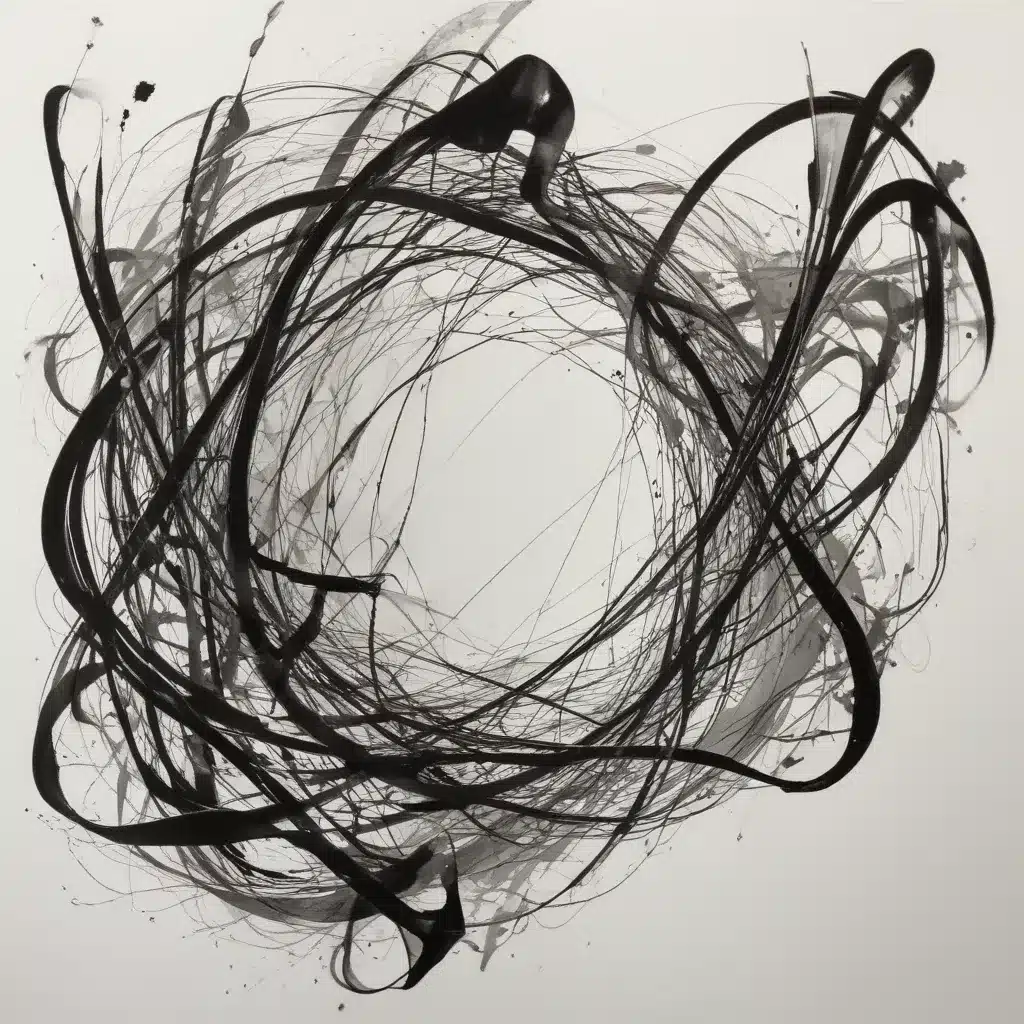
Drawing with pen and ink can be a remarkably versatile medium, capable of capturing the subtlest of textures and the most dramatic of shadows. By harnessing the sculptural potential inherent in the interplay of mark-making and the play of light, artists can imbue their ink-based works with a tangible sense of dimensionality and materiality.
Now, this might seem counterintuitive…
Embracing the Sculptural Essence of Drawing
Drawing has long been regarded as the foundation of artistic practice, the essential language that underpins all other forms of visual expression. While the primacy of drawing is well-established, its capacity to evoke the three-dimensional world is sometimes overlooked. Yet, as art historian Clement Greenberg once observed, the very act of “drawing in space” – manipulating two-dimensional forms to create the illusion of volume and mass – is a fundamental tenet of sculptural practice.
Greenberg’s insights resonate with the work of contemporary artists like Gus Cummins, whose “two-and-a-half-dimensional” constructions blur the boundaries between drawing, painting, and sculpture. Cummins’ large-scale, mixed-media works exemplify how the strategic application of ink, graphite, and other media can imbue a surface with a tangible, sculptural presence.
Similarly, the Drawing: Sculpture exhibition at the Drawing Room in London highlighted how various international artists are exploring the interplay between the flatness of the page and the volumetric qualities of the drawn mark. As the exhibition curators noted, these works “articulate a contest between formalism and conceptualism and the exhibition investigates the interplay between an attention to surface and material and attention to line and form.”
Charting the Expressive Potential of Pen and Ink
Pen and ink, with its inherent capacity for precise line-work and dynamic tonal variations, is a particularly fertile medium for exploring the sculptural qualities of drawing. Artists have long recognized the expressive potential of this versatile pairing, from the intricate hatchings of Rembrandt to the bold, abstracted forms of Saul Steinberg.
In her seminal book, “The Drawing Book,” editor Tania Kovats examines how contemporary sculptors like Antony Gormley and Rachel Whiteread have incorporated drawing into their practice, using it as a means of “analysis” and “experimentation.” Gormley, for instance, describes drawing as a way of “taking things apart and reassembling in a way that makes new connections,” while Whiteread emphasizes the role of drawing in her sculptural process, noting that it allows for a more “spontaneous” and “expressive” approach.
These insights point to the inherent synergy between drawing and sculpture, and the ways in which pen and ink, in particular, can be leveraged to explore the sculptural qualities of mark-making. By embracing the interplay of light and shadow, line and tone, artists working in this medium can imbue their drawings with a tangible sense of physicality and dimensionality.
Casting Shadows: Experimenting with Sculptural Mark-Making
One of the most powerful ways to harness the sculptural potential of pen and ink drawing is through a focused exploration of light, shade, and shadow. As the artist and educator Will Kemp has eloquently explained, the strategic application of tone and the careful delineation of cast shadows are essential for creating the illusion of three-dimensional form.
Kemp’s step-by-step tutorials offer a masterclass in understanding the fundamental principles of light logic, from the distinction between cast shadows and form shadows to the critical role of the “shadow line” in defining the contours of an object. By meticulously studying the interplay of light and shadow, artists can imbue their ink drawings with a tangible sense of depth, volume, and materiality.
Expanding the Boundaries of Pen and Ink Drawing
Beyond the realm of observational drawing, pen and ink can also be used as a medium for more conceptual, experimental approaches to mark-making. Artists like Lucia Nogueira, for example, have explored the expressive potential of drawing as a means of “discovery” and “transformation,” using the ink-bearing nib to create abstracted, psychologically-charged compositions.
Similarly, the work of contemporary collage artists, such as Julian Pacaud and Lucy Jones, demonstrates how the strategic juxtaposition of ink-based marks can generate unexpected visual narratives and challenge our preconceptions about the boundaries of the medium.
By embracing the sculptural qualities inherent in pen and ink drawing, artists can push the boundaries of the medium, blurring the lines between two-dimensional and three-dimensional forms, and creating works that captivate the viewer with their tangible, physical presence.
Practical Pen and Ink Drawing Tutorials
For those looking to hone their skills in pen and ink drawing, a range of practical tutorials and demonstrations are available online and in specialized art publications. These resources can be invaluable in helping aspiring artists develop a deeper understanding of the medium’s unique properties and unlock its full expressive potential.
One particularly helpful resource is the Pencil and Paint Muse website, which offers a wealth of informative articles and step-by-step guides covering everything from foundational drawing techniques to more experimental, mixed-media approaches. By exploring the site’s extensive library of content, artists can gain a solid grounding in the basics of pen and ink drawing while also discovering new ways to push the boundaries of the medium.
Whether you’re a seasoned artist or a beginner just starting out, the act of drawing with pen and ink can be a deeply rewarding and transformative experience. By embracing the medium’s inherent sculptural qualities and experimenting with innovative mark-making techniques, you can create works that captivate the viewer and challenge the very definition of what it means to draw.
Example: Modern Abstract Painting Series 2024